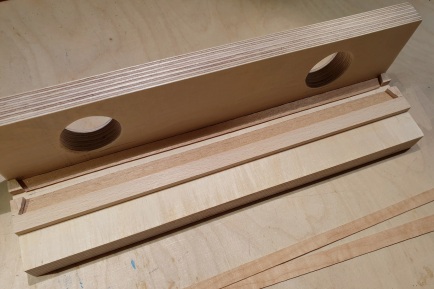Once the decision was made, I started to think about eqipment. I do have some woodworking experience, and over the years I have accumulated quite a few tools – a hammer, pliers, rasps, files, chisels, saws, a drill-press, drill bits, a belt grinder, a jig-saw, clamps, a vice. The year before last I had even built a, well, a sturdy working table, the next best thing to a proper workbench, and found a spot for a little workshop in the cellar.
So I didn’t come completely unequipped, but it was obvious that we would need quite a few additional tools. Basically everything necessary for fretwork. So I started looking for stuff, found Crimson’s Luthiers Starter Toolkit, ordered that and a few extra bits and pieces from Crimson. Bought a fret slotting saw here in Germany, some scrapers, a saw rasp, a router from my local DIY store.
I tried to buy as little as possible because, let’s be honest, this stuff is bloody expensive. And if you have things shipped from the UK to Germany, shipping is daylight robbery these days (around 50 Euros, no fault of Crimson’s, of course, they don’t make the freight rates), and then, adding insult to injury, there will be customs fees on top of that (another 80 Euros thanks to Brexit). Spending so much money on something that might turn out to be a cul-de-sac for me felt weird. I guess if it works well, I’ll come back and spend some more money on tools and stuff, a reasonable No 6 plane for example.
Then we talked about the design of the guitar, and ideas began to form. This being a first build with a certain level of trepidation as to what the result will be, I didn’t want to Continue reading “Preparing for the Build” →





